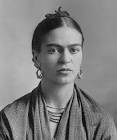Salvador Dalí – Surrealist Artist, Eccentric Genius, Legacy
Salvador Dalí, the name that resonates across the art world, is renowned for his surrealistic works and eccentric personality. Born on May 11, 1904, in Figueres, Catalonia, Spain, Salvador Dalí was a multifaceted artist involved in painting, sculpture, writing, and filmmaking. His ability to transform the ordinary into the extraordinary and the way he challenged the conventional notions of art left an indelible mark on the surrealist movement. Dalí’s work is often characterized by dreamlike imagery, meticulous attention to detail, and symbolic meanings. Beyond his artistic pursuits, Dalí was known for his flamboyant style and provocative public persona.

Personal Information
| Full Name | Salvador Domènec Felip Jacint Dalí i Domènech |
|---|---|
| Nick Name / Stage Name | Salvador Dalí |
| Born | May 11, 1904, Figueres, Catalonia, Spain |
| Died | January 23, 1989, Figueres, Catalonia, Spain, 84 |
| Age | 84 |
| Gender | Male |
| Zodiac Sign | Taurus |
| Hometown | Figueres |
| Nationality | Spanish |
| Years Active | 1919-1989 |
| Marital Status | Married |
| Husband/Wife | Gala Dalí |
| Children | None |
| Political Affiliation | Affiliated with the Surrealist Movement, Political Views Were Complex |
| Alma Mater | Real Academia de Bellas Artes de San Fernando, Madrid |
| Profession | Artist, Sculptor, Writer, Filmmaker |
| Net Worth (approx.) | $10 Million |
| Debut | 1919 |
| School | Colegio de Hermanos Maristas La Salle, Figueres |
| College | Residencia de Estudiantes, Madrid |
| Education Qualification / Degree | Fine Arts Degree |
| Hobbies/Habits/Interests | Symbolism, Psychoanalysis, Mathematics, Science |
| Favorite Clothing Brands | Designed His Own Clothing |
| Favorite Gadgets | N/A |
| Food Habit | Vegetarian |
| Awards | N/A |
| Notable Works | The Persistence of Memory, Christ of Saint John of the Cross, Swans Reflecting Elephants |
| Website | N/A |
Early Career
Salvador Dalí’s journey into the world of art began at a young age. His artistic talent was evident during his childhood, and his parents supported his creative endeavors. In 1919, Dalí had his first public art exhibition at the Municipal Theater in Figueres, marking the beginning of his prolific career as an artist. During his formative years, Dalí experimented with different styles, including impressionism, cubism, and fauvism.
Education
Dalí’s educational journey laid the foundation for his artistic development. He studied at the Colegio de Hermanos Maristas La Salle in his hometown of Figueres. In 1922, he enrolled at the Real Academia de Bellas Artes de San Fernando in Madrid, where he studied fine arts. Despite being a brilliant student, Dalí clashed with his instructors, who viewed his avant-garde style as controversial.
Career
Salvador Dalí’s career as an artist is punctuated by numerous milestones and artistic innovations. In the 1920s, he joined the surrealist movement, led by André Breton, and his work during this period reflected his fascination with the subconscious mind and dream imagery. His paintings from the surrealist era, including “The Persistence of Memory” and “Lobster Telephone,” are among his most iconic and influential works.
In the 1930s, Dalí expanded his artistic repertoire to include sculpture and photography. He also began working on set designs for ballets and films. His collaboration with the director Luis Buñuel on the seminal surrealist film “Un Chien Andalou” established him as a prominent figure in the world of filmmaking.
The outbreak of the Spanish Civil War in 1936 had a profound impact on Dalí, both personally and professionally. He was forced to flee to the United States, where he spent eight years exploring new artistic techniques and mediums. This period marked a significant transition in his style, as he moved away from pure surrealism toward classical and religious themes.
In the 1950s and beyond, Dalí’s career continued to flourish, with numerous exhibitions of his work held around the world. He also undertook commission-based projects, including the design of the Chupa Chups lollipop logo. Despite his commercial success, Dalí remained committed to his artistic vision and continued to experiment with different styles until his death.
Contributions and Impact
Salvador Dalí’s contributions to the art world are immeasurable. He not only redefined the surrealist movement but also influenced countless artists across different genres. His exploration of the subconscious mind and dream symbolism left a lasting mark on psychological and philosophical thought.
- The Persistence of Memory
-
This painting, completed in 1931, is perhaps Dalí’s most famous work. It has been interpreted in various ways but is commonly seen as a depiction of the relativity of time and the fleeting nature of existence.
-
Surrealist Manifesto
-
Dalí’s participation in the surrealist movement, as evidenced by his involvement in the writing of the Surrealist Manifesto, shaped the direction of avant-garde art in the 20th century.
-
Contribution to Filmmaking
-
His collaboration on “Un Chien Andalou” with Luis Buñuel resulted in a film that pushed the boundaries of cinematic expression and influenced the subsequent development of the medium.
-
Technical Innovations in Art
- Dalí experimented with various artistic techniques, including surrealistic photography and sculpture. His mastery of detail and perspective set new standards for artistic craftsmanship.
Awards and Honors
| Year | Award/Honor | Description |
|---|---|---|
| 1954 | International Grand Prize for Painting | Venice Biennale |
| 1964 | Gold Medal of Fine Arts | Spanish Ministry of Education |
| 1982 | Knight Grand Cross of the Order of Isabella the Catholic | Spanish Civilian Honor |
Personal Life
Despite his larger-than-life public persona, Salvador Dalí maintained a private personal life. He was married to Elena Ivanovna Diakonova, known as Gala, who not only served as his muse but also played a significant role in managing his career. The couple had a complex and tumultuous relationship, documented in many of Dalí’s works.
Personal Traits
| Trait | Description |
|---|---|
| Personality | Eccentric, Flamboyant, Self-Confident |
| Interests | Symbolism, Psychoanalysis, Religion |
| Hobbies | Photography, Chess, Sculpture |
| Passions | His Work, Theoretical Exploration, Self-Promotion |
| Values | Individualism, Artistic Freedom, Materialism |
| Quirks | Distinctive Moustache, Love of Shock Value |
| Fun Facts | Claimed that his “artistic genius” was reflected in his DNA. |
Height, Weight, Body Measurements
| Height | 1.7 m |
|---|---|
| Weight | 80 kg |
| Body Measurements | N/A |
| Eye Color | Brown |
| Hair Color | Black |
| Chest Size | N/A |
| Waist Size | N/A |
| Biceps Size | N/A |
| Height in Centimeters | 170 cm |
| Height in Meters | 1.7 m |
| Height in Feet Inches | 5’7″ |
Scientific or Professional Career
| Fields of Expertise | Painting, Sculpture, Photography, Filmmaking |
|---|---|
| Institutions | N/A |
| Contributions | Significant influence on surrealism, artistic experimentation, cultural discourse. |
Legacy
Salvador Dalí’s legacy is not just confined to his artistic achievements. He remains a cultural icon whose influence extends far beyond the art world. His ability to self-promote and craft a larger-than-life persona has inspired generations of artists to engage with the public in new and provocative ways.
Conclusion
In conclusion, Salvador Dalí’s impact on the art world is immeasurable. His willingness to push the boundaries of artistic expression and challenge societal norms has left a lasting imprint on creative disciplines beyond art. As an unapologetically eccentric figure, Dalí captured the imagination of countless people and continues to be a source of fascination and inspiration.
In summary, Salvador Dalí’s life and work continue to be celebrated and analyzed, and he remains one of the most iconic and controversial figures in the history of art. His ability to translate the complex workings of the mind into visual imagery has left an indelible mark on the artistic landscape.





